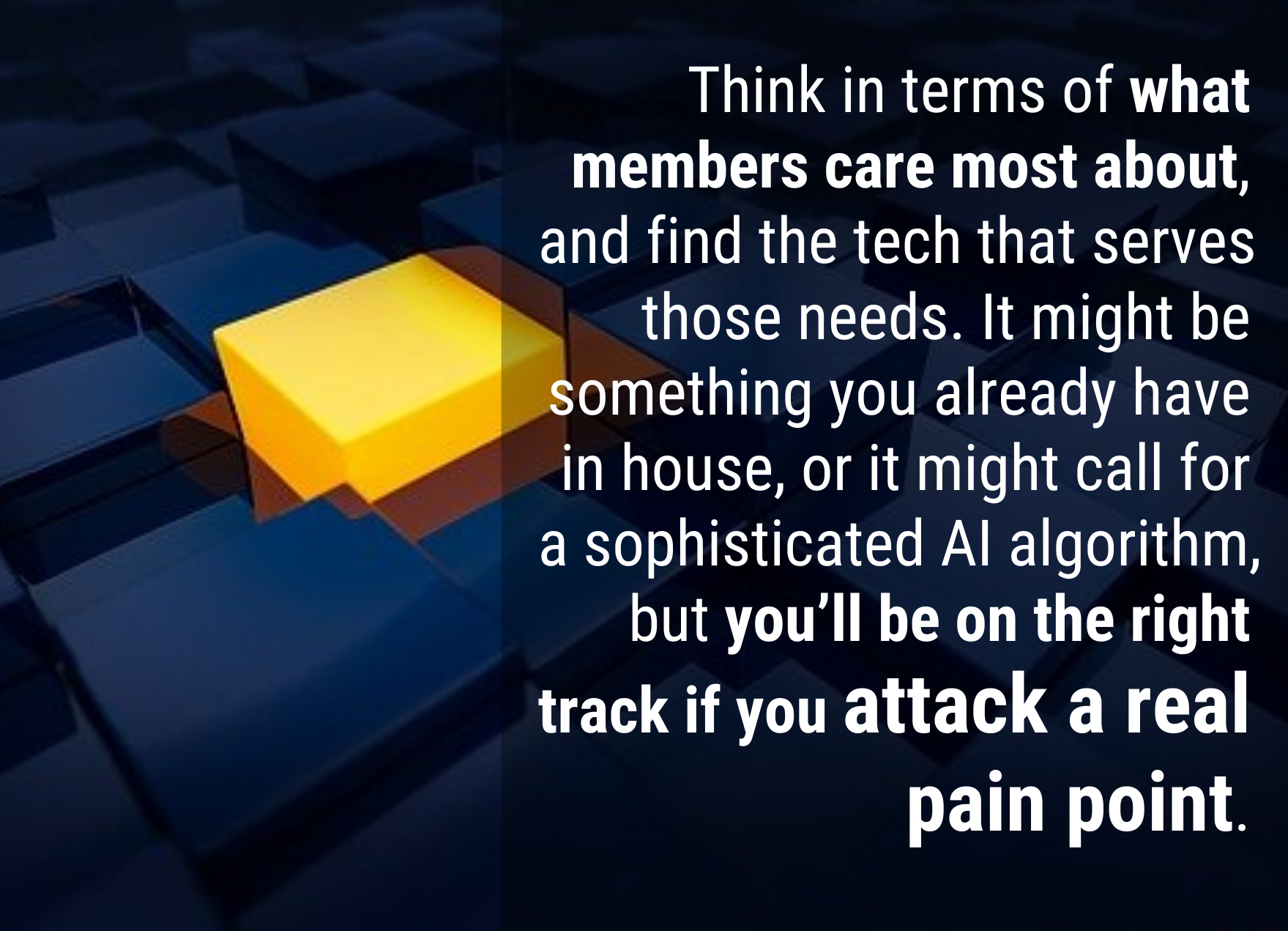Everything Is Fintech (and What to Do About It)
By Paul Timm, VP of Marketing and Strategic Development, NAFCU Services
The 2021 Innovation Spotlight was packed with some great new ideas and even a bit of inspiration. When Rahm McDaniel, Vice President of Strategic Solutions at Q2, gave the closing keynote, I knew he’d give us lots to talk about. Rahm always does. For my money, his best line of the day: “It's 2021. Everyone in the financial services business is a fintech now. Some are better at it than others.”
I’ve been thinking a lot about the things that make some better than others. And through that lens, here are some of the key points I lifted from Rahm’s talk:
 - Big results can spring from focusing on the basics. There was a recent Salesforce survey of financial services leaders that showed the priority of improving customer experiences dropped from 1st to 5th place last year. Lots of people in our space worried that somehow represented a diminishing focus on experience and innovation. Rahm frames it very differently: as we get more focused on what it actually means to improve an experience, we’re getting more specific when taking action. “Implementing new technology improves customer experience. Building trust improves their experience. Developing new products and services, solving problems with them improves customer experiences,” he said. “Updating your business model, having a better-trained workforce, and expanding your partnerships, that is the stuff that goes into improving experiences.” And I think that point about building trust, but in a digital world, stirs up all sorts of questions…and incredible possibilities for credit unions.
- Big results can spring from focusing on the basics. There was a recent Salesforce survey of financial services leaders that showed the priority of improving customer experiences dropped from 1st to 5th place last year. Lots of people in our space worried that somehow represented a diminishing focus on experience and innovation. Rahm frames it very differently: as we get more focused on what it actually means to improve an experience, we’re getting more specific when taking action. “Implementing new technology improves customer experience. Building trust improves their experience. Developing new products and services, solving problems with them improves customer experiences,” he said. “Updating your business model, having a better-trained workforce, and expanding your partnerships, that is the stuff that goes into improving experiences.” And I think that point about building trust, but in a digital world, stirs up all sorts of questions…and incredible possibilities for credit unions.
- Gadgets are great, but members want their problems solved. Innovative technology is just the packaging for any given solution. Some fintechs and neobanks are attracting a lot of attention for features like early direct deposit and the elimination of overdraft fees. These solutions are super compelling because a significant number of consumers have cash flow concerns and benefit from the features, not because of the underlying technology or user interface. I really appreciated Rahm’s passion on this issue: “people's lives don't necessarily coincide and revolve around the 15th and the 30th of the month, or every other Friday.” Ironically, early direct deposit is still based on decades-old ACH procedures, it’s just that the credit is applied sooner. “And it’s something that Chime has built a user base of millions of people on. If you can move the money into people's hands a little bit earlier, then the cash flow problem becomes a little bit less intense.”
- Focusing on perennial pain points will help us innovate. Along those lines, credit unions should think not in terms of how to apply cutting-edge technology to the underlying business of credits, debits, and lending, but in terms of how to solve problems as old as the financial services industry itself. That’s what fintechs are doing even if they lead with terms like digital and mobile. Think in terms of what members care most about, and find the tech that serves those needs. It might be something you already have in house, or it might call for a sophisticated AI algorithm, but you’ll be on the right track if you attack a real pain point. Rahm’s real-world take was: “If you can develop some intelligence to understand the patterns as the balance gets high and then low throughout the month, and give people a little bit of proactive warning that money is getting a little tight and that they will be paid probably as soon as next Wednesday, then usually they can hold things off without getting under water.”
- Technologies influence consumer opinion, but their priorities don’t change much. Looking at this poll from eMarketer/Insider Intelligence, there isn’t much YOY difference in what drives consumers when choosing a new FI. But fee concerns are still clearly the top priority, as newer fintechs put overdraft fees under the microscope. Mobile banking and rates both grew in importance, while branch locations dropped. “Branches became a little less important, but are still very important. Rates are still very important,” Rahm reminds us. “And to the extent that we can make overdrafts friendly, or eliminate them altogether, that’s probably a good idea.”
And there was still so much more to unpack from the session about member experience. It’s my favorite topic, so in the coming weeks I’ll have more on that and what Rahm had to say. We’ll continue with this theme that some of the most important innovations have nothing at all to do with technology.
